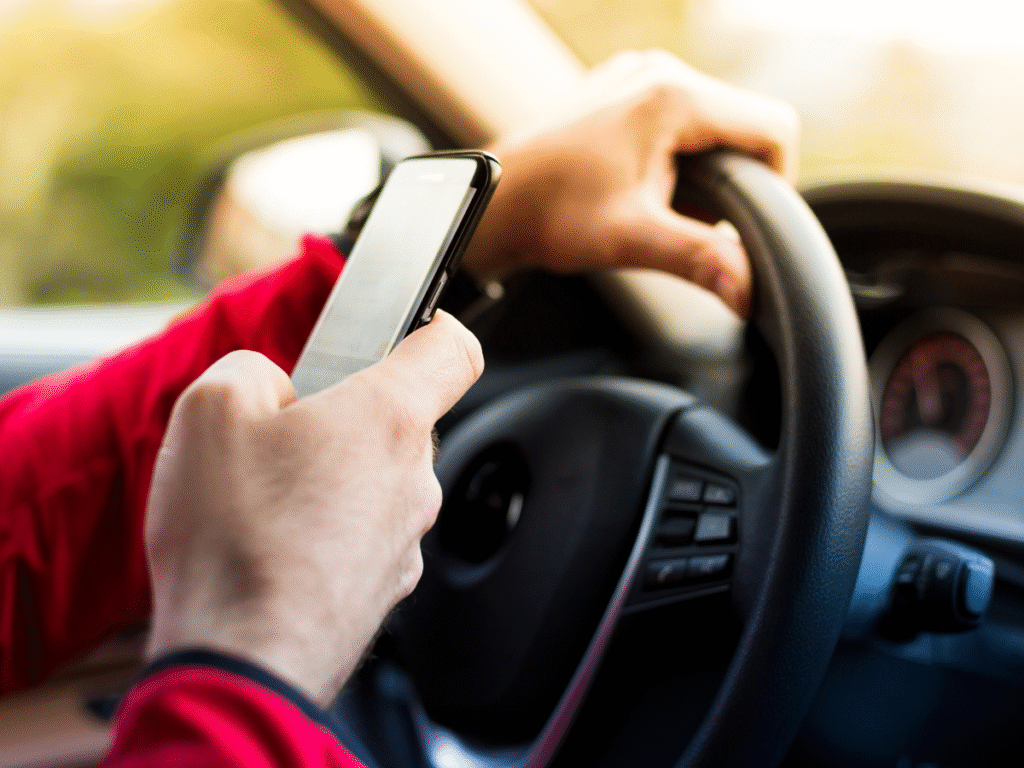How to Prove a Distracted Driving Claim in a Wyoming Injury Lawsuit

If you’ve been injured by someone who wasn’t paying attention behind the wheel, you may have grounds to file a distracted driving injury lawsuit under Wyoming law. But proving distracted driving in court is not always straightforward.
Insurance companies rarely accept blame without hard evidence, and the at-fault driver is unlikely to admit they were texting or scrolling when they crashed into you. That’s why it’s so important to build a strong case.
At Steven Titus & Associates, P.C., we help injured Wyoming residents hold negligent drivers accountable.
What Counts as Distracted Driving in Wyoming?
Distracted driving involves any activity that diverts a driver’s attention from the road. It falls into three categories:
- Visual – taking your eyes off the road (e.g., reading a text)
- Manual – taking your hands off the wheel (e.g., eating or reaching)
- Cognitive – taking your mind off driving (e.g., daydreaming, arguing)
Some common distractions include:
- Texting or using a phone
- Using in-car entertainment systems
- Eating or drinking
- Grooming
- Interacting with passengers
- Reaching for objects
Wyoming Law on Mobile Devices & Driving
Wyoming has specific laws aimed at preventing phone-related distractions behind the wheel. Under W.S. § 31-5-237, it is illegal to text while driving a motor vehicle.
Key Points of the Law
- Drivers may not compose, read, or send text-based communication while driving.
- The law applies to handheld cellphones and electronic devices.
- Exceptions exist for using devices via hands-free systems or for emergency communication.
Key Evidence to Build Your Distracted Driving Injury Claim
Cell Phone Records
One of the most powerful tools to prove distracted driving is the driver’s cell phone records. These can show:
- Timestamps for sent/received texts
- Data usage during the time of the crash
- Call logs and app activity
Obtaining these records often requires a subpoena, which your attorney can request during the discovery phase of a lawsuit. We work quickly to preserve this evidence before it’s deleted or lost.
Dash Cam or Surveillance Footage
Dash cameras, traffic cameras, or nearby security systems may capture the moments leading up to the collision. Footage showing the other driver looking down or holding a device can be key to supporting your claim.
If you or someone else at the scene has dash cam footage, notify your attorney immediately. We can also request footage from nearby businesses or municipalities.
Eyewitness Testimony
Bystanders, passengers, or other drivers can offer valuable firsthand accounts. If someone saw the other driver texting or acting distracted, their testimony can strongly support your case.
We track down witnesses early, take formal statements, and may call them to testify during the trial if needed.
Police Reports
After a crash, the responding officer typically files a police report that may include:
- Observations about driver behavior
- Citations for texting or phone use
- Statements made at the scene
If the officer suspected the driver was distracted, that detail may be documented and used as leverage during settlement negotiations or in court.
Accident Reconstruction
Crash reconstruction experts analyze vehicle data, skid marks, and collision angles. They can help establish that the other driver failed to brake or swerve to avoid a collision. This may be used to support a narrative that they were not paying attention.
How a Distracted Driver Lawsuit Helps Victims Recover
A successful distracted driving injury lawsuit may allow you to recover compensation for:
- Medical bills (past and future)
- Lost wages and reduced earning capacity
- Property damage
- Pain and suffering
- Emotional distress
- Loss of enjoyment of life
If the driver’s actions were especially reckless (e.g., texting at high speeds), your attorney may also seek punitive damages.
Insurance Company Pushback
Insurance companies will often try to argue that distraction is speculative or not the main cause of the crash. They may claim:
- You didn’t see the phone use yourself.
- The driver wasn’t cited at the scene.
- Other factors (e.g., road conditions or speed) played a larger role.
Our personal injury legal team at Steven Titus & Associates, P.C. knows how to counter these tactics with hard evidence and expert testimony.
Steps to Take After a Suspected Distracted Driving Crash
If you believe a distracted driver caused your injuries, take these steps to protect your rights:
- Call 911 and report the accident. Request medical help and ask for a police report.
- Document the scene: Take photos of both vehicles, road conditions, and any visible phone or distractions in the other car.
- Talk to witnesses: Get names and contact information.
- Avoid confrontation: Don’t accuse the other driver on the scene.
- See a doctor: Get the help you need to get better. This can also provide documentation about the cause of your injuries.
- Contact a Gillette distracted driving accident attorney: The sooner we can start investigating, the better.
Why You Need a Wyoming Car Accident Lawyer
Distracted driving cases require technical knowledge and aggressive investigation. You need a Campbell County car accident lawyer who knows Wyoming tort law, how to obtain digital records, and how to hold negligent drivers accountable.
At Steven Titus & Associates, P.C., we’ve helped clients across Gillette and Wyoming get the compensation they need to recover after tragic crashes caused by driver negligence. We handle all communications with insurance companies, file legal motions, and build a solid case to support your case.
Speak With an Experienced Distracted Driving Accident Lawyer in Campbell County
If you were injured by a distracted driver, you shouldn’t have to pay the price for someone else’s careless behavior. Let us investigate the accident, preserve evidence, and fight for the justice you deserve.
Call Steven Titus & Associates, P.C. today at (307) 257-7800 to schedule your free consultation.

Your FREE Case Strategy Session
On All Injury and Criminal Cases
Contact our office right now to speak to
someone who wants to help you.